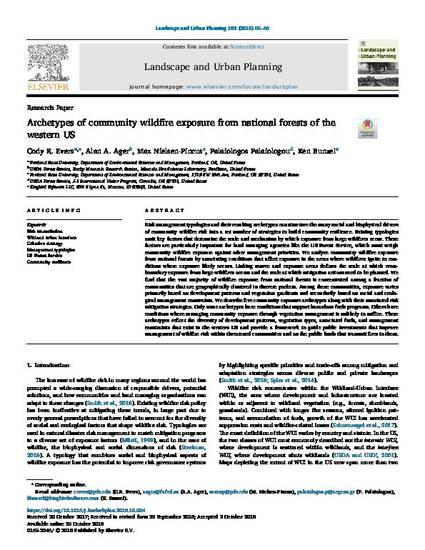
- United States. Forest Service -- Management,
- Risk management,
- Wildland-urban interface,
- Wildfire risk -- United States
Risk management typologies and their resulting archetypes can structure the many social and biophysical drivers of community wildfire risk into a set number of strategies to build community resilience. Existing typologies omit key factors that determine the scale and mechanism by which exposure from large wildfires occur. These factors are particularly important for land managing agencies like the US Forest Service, which must weigh community wildfire exposure against other management priorities. We analyze community wildfire exposure from national forests by associating conditions that affect exposure in the areas where wildfires ignite to conditions where exposure likely occurs. Linking source and exposure areas defines the scale at which crossboundary exposure from large wildfires occurs and the scale at which mitigation actions need to be planned. We find that the vast majority of wildfire exposure from national forests is concentrated among a fraction of communities that are geographically clustered in discrete pockets. Among these communities, exposure varies primarily based on development patterns and vegetation gradients and secondarily based on social and ecological management constraints. We describe five community exposure archetypes along with their associated risk mitigation strategies. Only some archetypes have conditions that support hazardous fuels programs. Others have conditions where managing community exposure through vegetation management is unlikely to suffice. These archetypes reflect the diversity of development patterns, vegetation types, associated fuels, and management constraints that exist in the western US and provide a framework to guide public investments that improve management of wildfire risk within threatened communities and on the public lands that transmit fires to them.
© 2018 Published by Elsevier B.V.
This work was authored as part of the Contributor's official duties as an Employee of the United States Government and is therefore a work of the United States Government. In accordance with 17 U.S.C. 105, no copyright protection is available for such works under U.S. Law.
